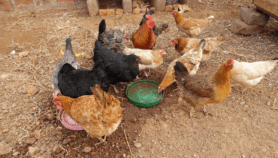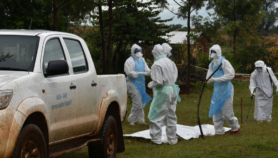Send to a friend
The details you provide on this page will not be used to send unsolicited email, and will not be sold to a 3rd party. See privacy policy.
Ebola has long held the public imagination as one of the world’s most terrifying diseases. Although the World Health Organisation estimates it has killed only 1,000 people in 30 years, the mortality rate can hit 90 per cent, and the symptoms, such as widespread hemorrhaging, are gruesome. Moreover, epidemics now occur almost yearly.
In this article, Martin Enserink examines promising new developments in Ebola research. At a meeting last month at the National Institutes of Health Vaccine Research Center in Bethesda, Maryland, a US-based team presented data on a potential treatment for Ebola that can reduce mortality by 30 per cent in infected rhesus monkeys.
Two competing vaccines from US and Canadian teams also hold out real hope, but are already facing serious obstacles. One, vesicular stomatitis virus (VSV) vaccine, can cause illness in humans and could face an uphill regulatory battle. But both may fall at the next hurdle — field tests in Africa. As last year’s outbreak in Gabon showed, bad relations between locals and international health workers could make trials impossible.
Link to full article in Science
Reference: Science, 302, 1141 (2003)













